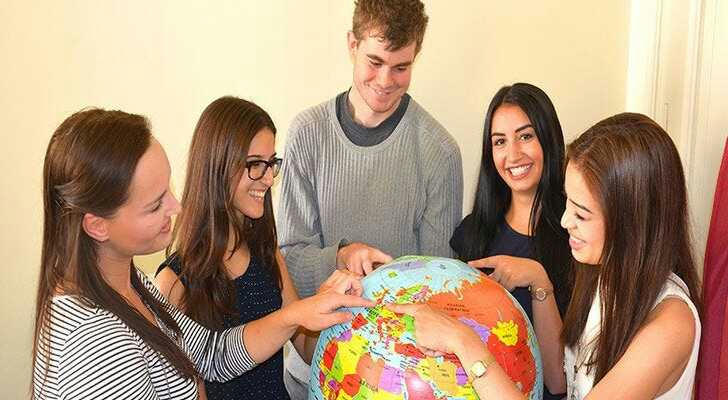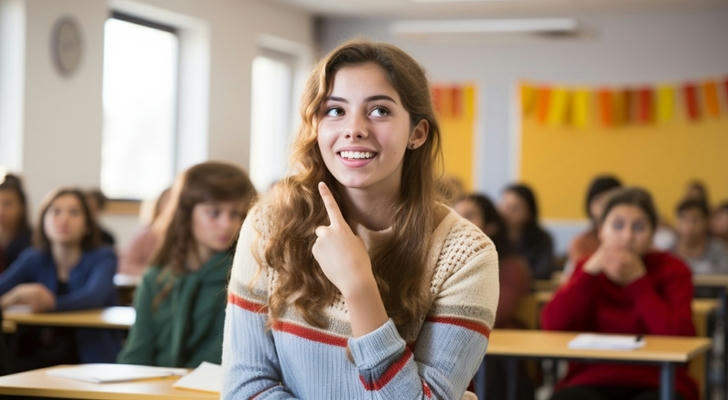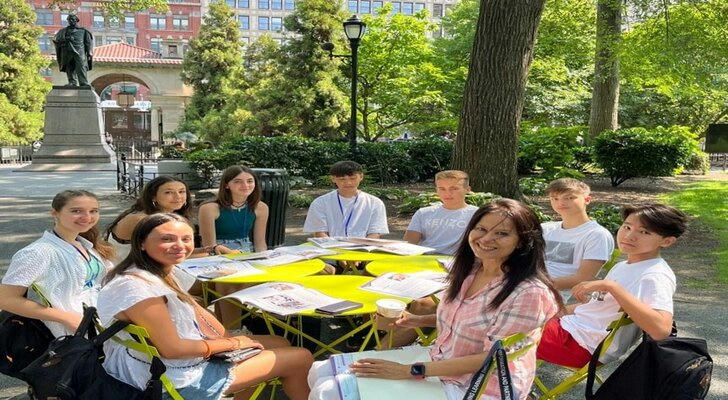Immersive Language Learning: How to Use Media and Culture to Enhance Your Skills

Immersive language learning is a dynamic approach that goes beyond the confines of traditional textbooks and classrooms. It involves surrounding oneself with the language in a way that mimics natural acquisition, similar to how children learn their first language. The integration of media and culture into language study is a powerful tool that can significantly accelerate the learning process, making it more enjoyable and effective.

The Concept of Immersive Learning
Immersive learning is defined by its authenticity and practical application. It involves total linguistic and cultural immersion, where learners are exposed to real-life situations and contexts. The benefits of this method are manifold: it improves listening skills, expands vocabulary, and enhances understanding of cultural nuances. By immersing oneself in the language, learners are compelled to think in the target language, which is a crucial step towards fluency.

Using Media to Enhance Language Skills
Films and TV Shows
Watching films and TV shows in the target language is an excellent way to immerse oneself in the language. The benefits are multifold: learners can improve their listening skills, pick up on slang and idiomatic expressions, and gain insights into cultural behaviors. When selecting shows and movies, it's important to choose content that is engaging and appropriate for one's language level. Beginners might start with children's shows or dubbed movies, while more advanced learners can tackle subtitled or original content.
Music and Podcasts
Music and podcasts are invaluable resources for language learners. They provide a rhythmic and engaging way to improve comprehension and pronunciation. By listening to songs and podcasts, learners can become familiar with different accents and intonations. To find relevant content, one can explore popular music streaming platforms or podcast directories, looking for content that aligns with personal interests and language goals.
Books and Articles
Reading in the target language is a classic immersive technique. It helps learners to understand sentence structure and grammar in context. For beginners, starting with children's books or simplified readers can be less intimidating. As proficiency grows, learners can progress to newspapers, magazines, and novels. Strategies for choosing suitable reading materials include selecting topics of interest and ensuring the material is not too complex.
Engaging with Culture
Cultural Events and Festivals
Participating in cultural events and festivals can provide a rich context for language learning. It allows learners to experience the language in a vibrant, real-world setting. Examples of events to attend include local holidays, art exhibitions, and theater performances. These experiences not only enhance language skills but also foster a deeper appreciation for the culture.
Cuisine and Cooking
Food is a universal language that can bridge cultural divides. Exploring language through cooking can be both fun and educational. Learners can start by studying simple recipes in the target language, which introduces them to new vocabulary and cultural practices. Cooking and sharing a meal can be a rewarding way to practice language skills in a practical setting.
Interactive Language Practice
Language Exchange Programs
Interacting with native speakers is invaluable for language learners. Language exchange programs facilitate this by pairing learners with native speakers for mutual language practice. The benefits include improved speaking skills, increased cultural awareness, and the opportunity to receive feedback from a native speaker. Finding a language exchange partner can be done through specialized websites, apps, or local language clubs.
Social Media and Online Communities
Social media and online communities provide a platform for learners to engage in discussions and practice their language skills. By joining groups and forums related to their interests, learners can interact with native speakers and other learners. Best practices for meaningful interactions include being active, respectful, and open to learning from others.
Combining Media and Culture for Maximum Impact
To achieve maximum impact, learners should create a balanced study plan that incorporates a variety of media and cultural activities. This could include setting aside time for watching TV shows, listening to podcasts, reading, and attending cultural events. Setting clear goals and tracking progress is essential for staying motivated and measuring success.

Conclusion
Immersive language learning through media and culture is a powerful and enjoyable method that can transform language acquisition. By integrating these methods into daily practice, learners can improve their language skills in a way that is both engaging and effective. The benefits are clear: enhanced comprehension, increased fluency, and a deeper connection to the culture. It's time to dive in and start your immersive language learning journey.
